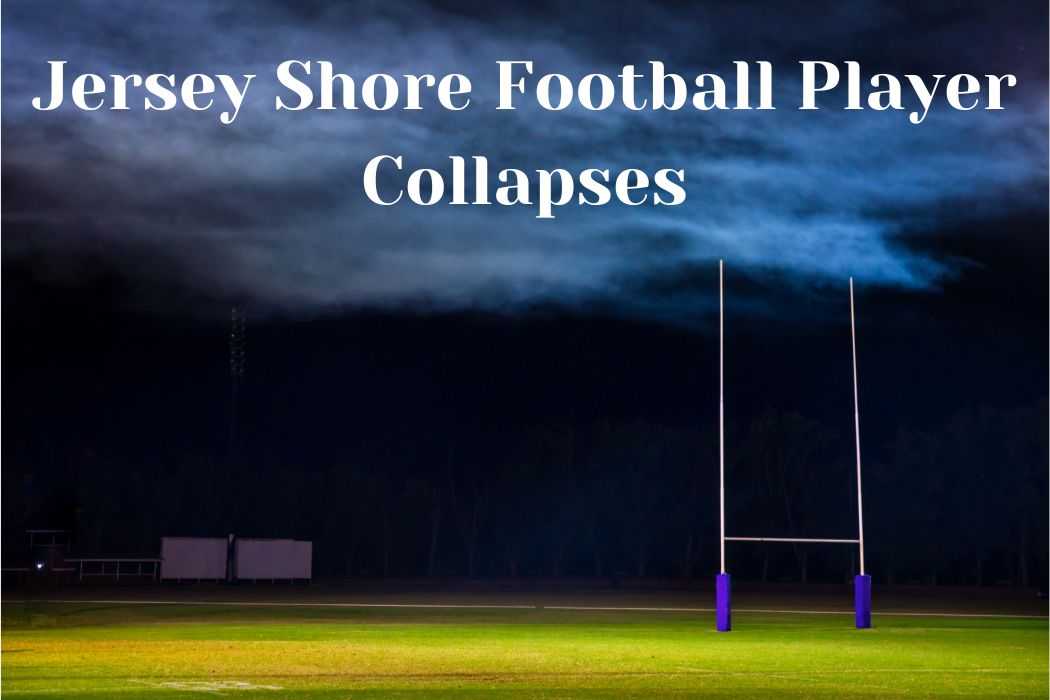The sudden collapse of a Jersey Shore football player during a recent game has sent shockwaves through the local sports community and raised concerns about athlete safety. This article delves into the incident jersey shore football player collapses, exploring the possible causes, the immediate response from medical personnel, and the broader implications for sports safety. The goal is to provide a comprehensive understanding of what occurred, why it might have happened, and how similar incidents can be prevented in the future.
Table of Contents
Introduction to the Incident
What Happened on the Field?
During a high school football game at the Jersey Shore, a player unexpectedly collapsed on the field, sparking immediate concern from teammates, coaches, and spectators. Medical personnel rushed to the scene to provide emergency care, halting the game. The incident starkly reminded everyone of the inherent risks associated with contact sports like football, where physical exertion and impact can sometimes lead to serious health issues.
The Player Involved
Possible Causes of the Collapse
Heat Exhaustion and Dehydration
One of the most common causes of sudden collapse in athletes, especially during hot weather, is heat exhaustion or heatstroke. Football games often require intense physical exertion, and when combined with high temperatures and inadequate hydration, the body can overheat, leading to a collapse.
Symptoms of Heat-Related Illnesses:
- Profuse sweating followed by dry skin
- Nausea and vomiting
- Muscle cramps and weakness
- Dizziness and fainting
In this case, if the game was played under particularly hot conditions, it’s possible that the player may have suffered from heat exhaustion.
Cardiac Events
Another potential cause of collapse in athletes is a cardiac event, such as sudden cardiac arrest (SCA). This condition occurs when the heart suddenly stops beating due to an electrical malfunction. While rare, SCA can happen to young, seemingly healthy athletes, often without warning.
Risk Factors for SCA:
- Undiagnosed heart conditions (e.g., hypertrophic cardiomyopathy)
- Family history of heart disease
- Extreme physical exertion
It’s critical to consider this possibility, as it underscores the importance of regular health screenings for athletes, even those who appear to be in peak physical condition.
Concussion or Head Trauma
Football is a high-contact sport, and concussions or other forms of head trauma are not uncommon. While it was not immediately clear whether the player had sustained a head injury prior to collapsing, it remains a possibility. Concussions can lead to confusion, dizziness, and loss of consciousness, which could explain a sudden collapse.
Signs of Concussion:
- Headache or pressure in the head
- Confusion or feeling “foggy”
- Loss of consciousness
- Balance issues and dizziness
If the player had sustained a hit to the head during the game, this could have contributed to his collapse.
Underlying Medical Conditions
In some cases, athletes may have underlying medical conditions that go undetected until a critical incident occurs. Conditions such as asthma, epilepsy, or even certain genetic disorders can sometimes lead to unexpected health emergencies during intense physical activity.
Examples of Conditions:
- Asthma exacerbations
- Epileptic seizures
- Anemia or other blood disorders
It’s important for athletes to have thorough medical check-ups to identify any potential health risks before they participate in sports.
Immediate Response and Medical Care
On-Field Medical Attention
The swift response of the medical team was crucial in stabilizing the player after his collapse. In cases like this, immediate action can make the difference between life and death. The team’s quick thinking and ability to provide first aid, including CPR if necessary, likely played a vital role in the player’s initial recovery.
Transport to Hospital
After receiving initial care on the field, the player was transported to a nearby hospital for further evaluation and treatment. The decision to transport him immediately ensured that he received the specialized care needed to address the underlying cause of his collapse.
Support from the Community
The local community, including the player’s school and teammates, rallied together in support of him and his family. Vigils, prayer meetings, and social media campaigns were organized to send well-wishes and positive energy to the player as he recovered. This outpouring of support highlighted the close-knit nature of the Jersey Shore community and their collective concern for the well-being of their young athletes.
Safety Measures in Sports
Preventing Heat-Related Illnesses
To prevent incidents of heat exhaustion or heatstroke, it’s essential for coaches and trainers to monitor the temperature and humidity levels before games and practices. Ensuring that players stay hydrated and take regular breaks can significantly reduce the risk of heat-related illnesses.
Cardiac Screenings for Athletes
Given the potential for cardiac events, regular heart screenings should be a priority for all athletes. Schools and sports organizations can implement mandatory health checks, including EKGs, to detect any underlying heart conditions that might otherwise go unnoticed.
Concussion Protocols
Implementing and adhering to strict concussion protocols is vital for the safety of football players. Any player who shows signs of a concussion should be immediately removed from the game and evaluated by a medical professional before being allowed to return to play.
Emergency Response Plans
Having a well-established emergency response plan is crucial for any sports team. Coaches, trainers, and staff need to train in CPR and other first aid techniques, and they must always have an emergency action plan in place for dealing with serious injuries or medical emergencies.
Conclusion
The collapse of the Jersey Shore football player collapses serves as a sobering reminder of the potential dangers associated with sports, particularly contact sports like football. As they work to determine the exact cause of his collapse, this incident underscores the importance of prioritizing athlete safety, conducting regular medical screenings, and maintaining robust emergency response plans. As the player recovers, the focus shifts to preventing such incidents in the future and ensuring that the health and safety of young athletes remain a top priority.
FAQs
What happened to the Jersey Shore football player?
The jersey shore football player collapses suddenly during a high school football game. The incident prompted immediate medical attention and led to widespread concern.
What are the possible causes of the player’s collapse?
Possible causes include heat exhaustion, cardiac events, concussion, or an underlying medical condition.
How was the player treated after collapsing?
The player received on-field medical attention before being transported to a hospital for further treatment.
What steps can be taken to prevent similar incidents in the future?
Preventative measures include monitoring for heat-related illnesses, conducting regular cardiac screenings, adhering to concussion protocols, and having an emergency response plan in place.
How has the community responded to the player’s collapse?
The local community has shown strong support through vigils, prayer meetings, and social media campaigns, offering well-wishes to the player and his family.
What is the importance of cardiac screenings for athletes?
Cardiac screenings can help detect underlying heart conditions that might lead to sudden cardiac arrest, ensuring that athletes are in good health before participating in sports.





